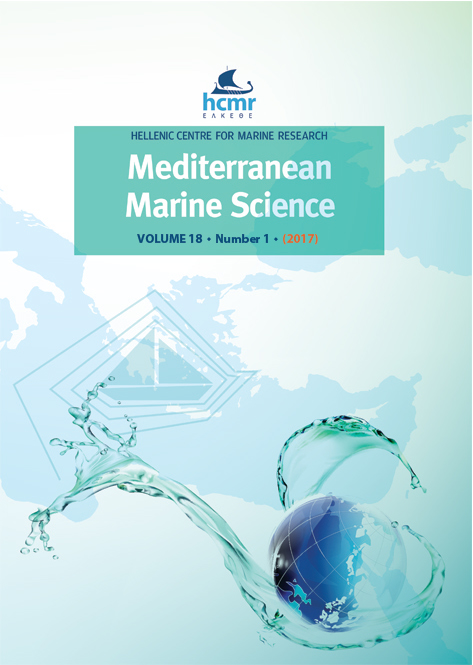Seasonal and spatial variation of bacterial production and abundance in the northern Levantine Sea

Abstract
Spatial and temporal heterogeneity in bacterial production and abundance in relation to ambient bio-physicochemical parameters has been investigated in the Levantine Sea. Five stations with different trophic states in an area extending from highly eutrophic Mersin bay to the mesotrophic Rhodes gyre area including the oligotrophic offshore waters were sampled four times. Integrated bacterial production varied between 6.1 and 90.3 µg C m-2 d-1 with higher rates occurring during September 2012 in offshore waters. Bacterial abundance ranged between 0.18 and 7.3 x 105 cells ml-1 within the euphotic zone and was generally higher up to 100 meters throughout the study period. In offshore waters, bacterial production (0.401 to 0.050 µg C m-3 d-1), abundance (4.5 to 1.6 x 105 cells ml-1) and depth of the productive layer decreased from 150 to 75 meters westward along the transect. Although the highest abundance was observed in July 2012 in offshore waters, the highest activity was measured in September 2012. These results indicated that the temperature played a key role in regulating bacterial abundance and production in the area. High chlorophyll concentrations in March did not correspond to high bacterial abundance and production at the same time. Increase in dissolved organic carbon content following spring phytoplankton bloom and the increase in temperature in the mean time might have enhanced the bacterial activity towards summer.
Article Details
- How to Cite
-
YUCEL, N. (2017). Seasonal and spatial variation of bacterial production and abundance in the northern Levantine Sea. Mediterranean Marine Science, 18(1), 97–106. https://doi.org/10.12681/mms.1627
- Issue
- Vol. 18 No. 1 (2017)
- Section
- Research Article
Authors who publish with this journal agree to the following terms:
- Authors retain copyright and grant the journal right of first publication with the work simultaneously licensed under a Creative Commons Attribution Non-Commercial License that allows others to share the work with an acknowledgement of the work's authorship and initial publication in this journal.
- Authors are able to enter into separate, additional contractual arrangements for the non-exclusive distribution of the journal's published version of the work (e.g. post it to an institutional repository or publish it in a book), with an acknowledgement of its initial publication in this journal.
- Authors are permitted and encouraged to post their work online (preferably in institutional repositories or on their website) prior to and during the submission process, as it can lead to productive exchanges, as well as earlier and greater citation of published work (See The Effect of Open Access).




